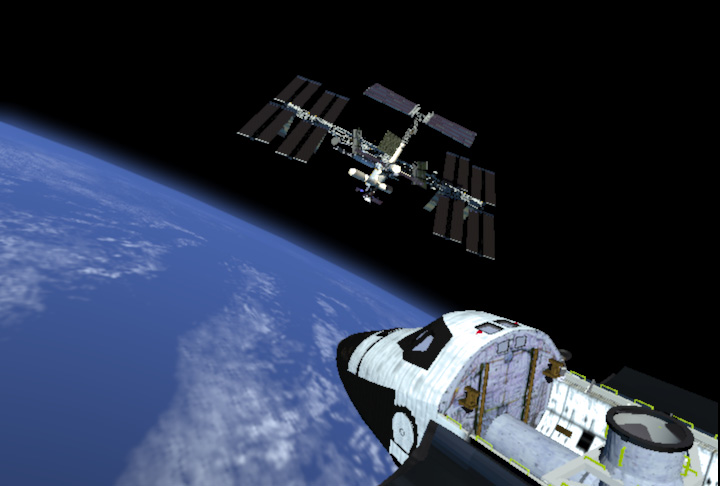

Image credit: NASA/Crew of STS-132/Wikimedia Commons.The International Space Station orbits the Earth every 92 minutes at an altitude between 205 and 255 miles, travelling at an average speed in excess of 17,000 miles per hour (7.5 kilometres per second). The International Space Station on as seen from the departing Space Shuttle Atlantis during STS-132. The orbital outpost has been continuously occupied since November 2000 and has seen more than 200 visitors from 15 countries. Since then, more than 115 constructional space flights using five different types of launch vehicles have led to the 73 x 109 x 20 metre, 420-tonne structure that we see today.

It so happens that the ISS will be well seen from the British Isles during the first part of August, appearing like a slowly moving bright star, crossing the sky in an arc from west to east.Īn engineering and scientific marvel of our age, construction of the ISS began with the launch of the first module, Zarya, in November 1998. Image credit: NASA/Bill Ingalls.While most celestial objects require a telescope or binocular to see clearly, there is one bright, man-made object that makes regular visits to the night sky that can be enjoyed with nothing more than the naked eye, whether you live in the country or the heart of a light-polluted city - the International Space Station, or ISS. The International Space Station makes several visible passes over the British Isles during the first ten days of August. Onboard the ISS are NASA astronauts Scott Kelly and Kjell Lindgren: Russian Cosmonauts Gennady Padalka, Mikhail Kornienko, Oleg Kononenko, and Japanese astronaut Kimiya Yui. The ISS (circled) is seen in silhouette as it transits the lunar surface at roughly five miles per second at 4:41am EDT on Sunday, 2 August 2015 as seen from Woodford, Virginia, USA. Please follow SpaceRef on Twitter and Like us on Facebook.Like any object in low Earth orbit, the International Space Station (ISS) can can occasionally pass in front of (transit) more distant objects - in this case, the Moon.
INTERNATIONAL SPACE STATION FROM EARTH TELESCOPE FULL
Download the full high-resolution image. This is particularly useful for monitoring areas prone to long periods of darkness - such as the Arctic - or providing imagery for emergency response during extreme weather conditions. The advantage of radar as a remote sensing tool is that it can image Earth's surface through rain and cloud, and regardless of whether it is day or night. The various colours in the ocean are due to the changing surface currents and sediments from river deltas, while major cities and towns are visible in white owing to the strong reflection of the radar signal. In this image, boats from 28 December 2021 appear in red, those from 9 January 2022 appear in green, and those from 21 January 2022 appear in blue. The sea surface reflects the radar signal away from the satellite, making water appear dark in the image and contrasts with metal objects, in this case ships and vessels, which appear as bright, sparkly dots in the dark water. This week's image contains satellite data stitched together from three separate radar scans, in order to detect changes occurring between acquisitions. It owes its growth and prosperity to its position at the southern extremity of the Malay Peninsula, where it dominates the Strait of Malacca, which connects the Indian Ocean to the South China Sea. The port offers connectivity to more than 600 ports in 123 countries. Singapore is home to the largest port in Southeast Asia and one of the busiest in the world. Singapore Island is separated from the Peninsular Malaysia to the north by the Johore Strait, a narrow channel crossed by a road and train causeway, while the southern end faces the Singapore Strait, where the Riau-Lingga Archipelago (part of Indonesia) extends. Changi Airport, one of the largest transportation hubs in Asia, can be seen at the eastern end of the island. The highest summit, Timah Hill, has an elevation of only 160 m. Nearly two-thirds of the Singapore Island is less than 15 m above sea level. It consists of the 710 sq km Singapore Island, visible in the top-centre of the image, as well as some 60 small islets. The Republic of Singapore is located just off the southern tip of the Malayan Peninsula, between Malaysia and Indonesia, around 135 km north of the equator. This radar image, captured by the Copernicus Sentinel-1 mission, shows us the only city-island-nation - Singapore - and one of the busiest ports in the world.


 0 kommentar(er)
0 kommentar(er)
